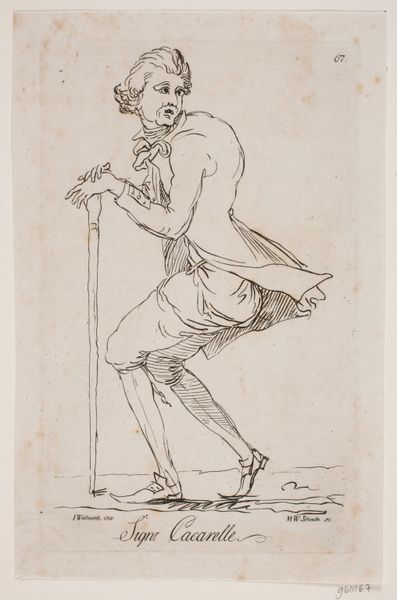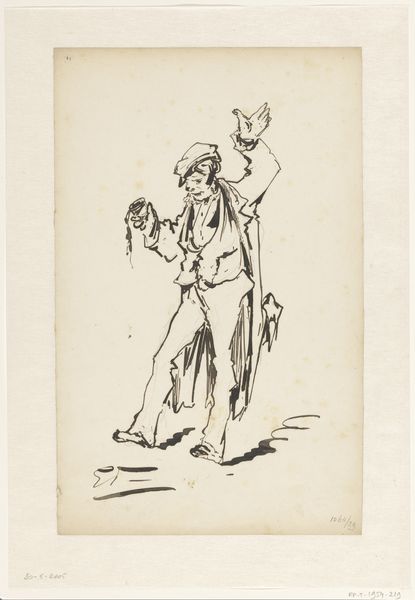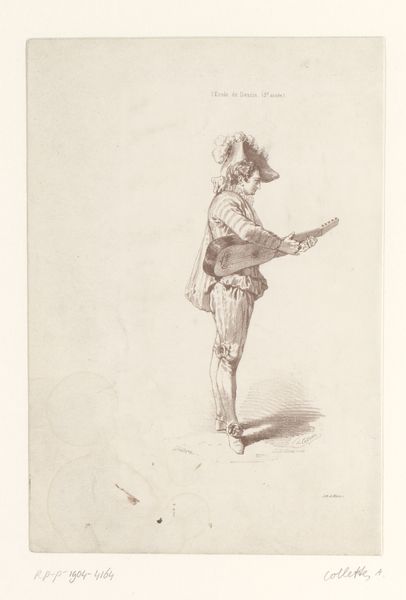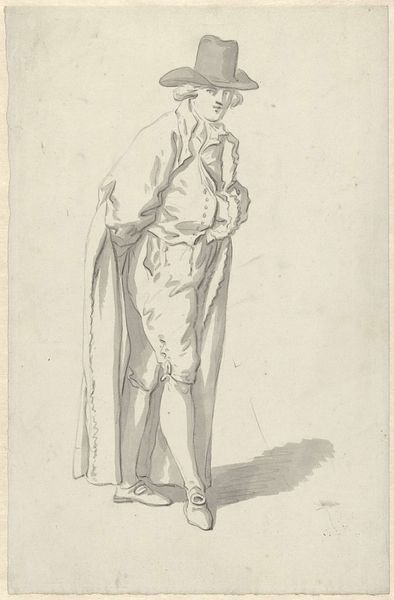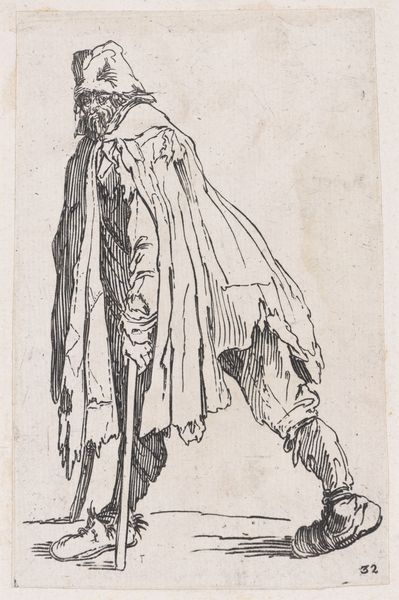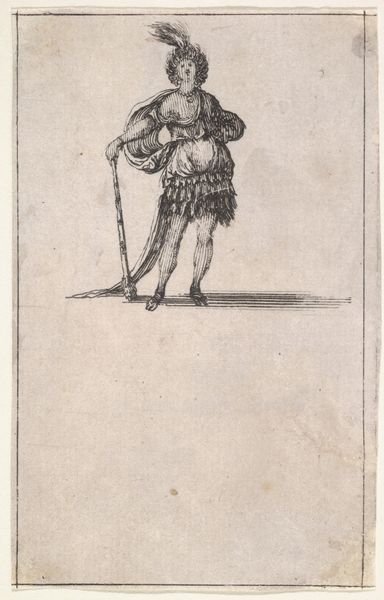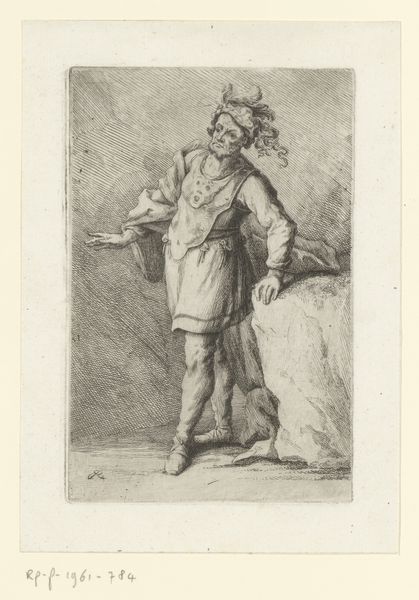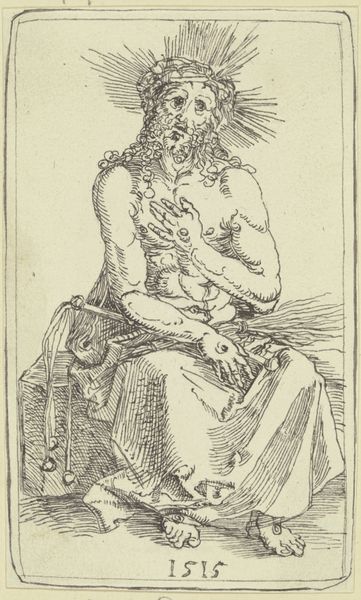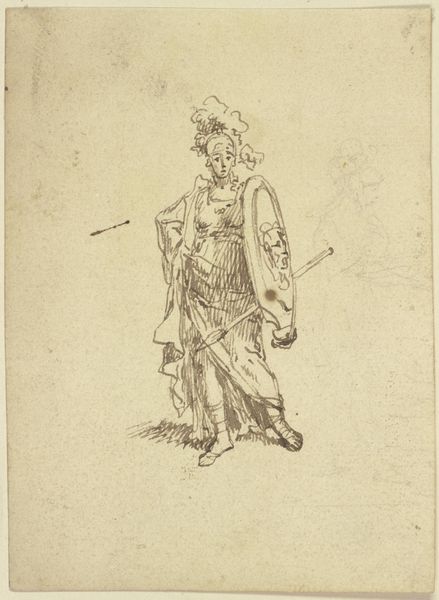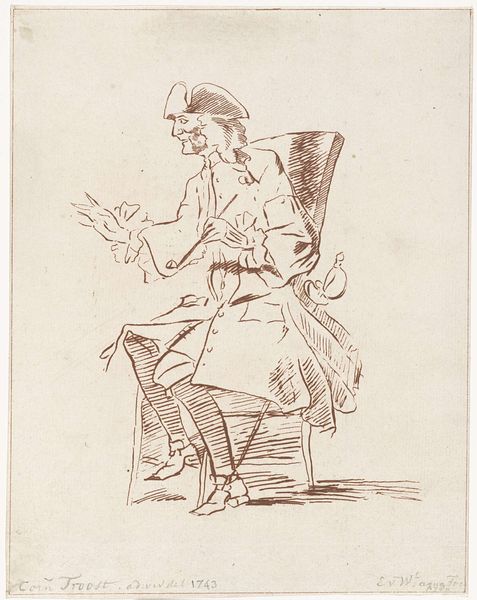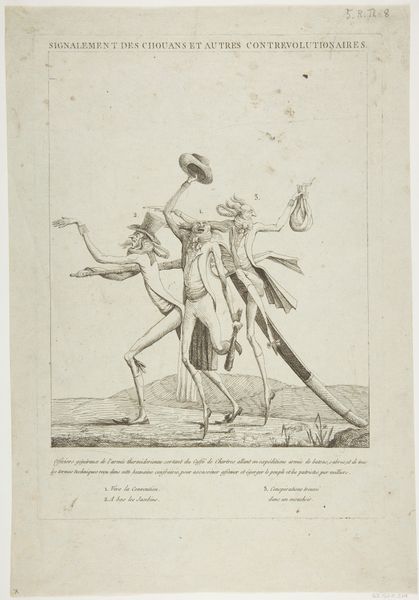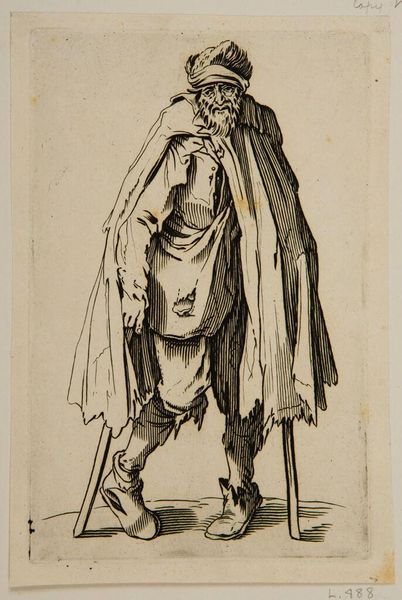
drawing, print, ink, engraving
#
drawing
# print
#
figuration
#
ink
#
line
#
engraving
Dimensions: 244 mm (height) x 170 mm (width) (plademaal)
Editor: Here we have "Moso Rimerius," a drawing and engraving by M. W. Schmith, created between 1796 and 1802. The figure, rendered with such delicate lines, almost appears satirical in nature, but perhaps it's speaking to the position of creatives at the time? How do you interpret this work? Curator: What strikes me is how this image can be viewed as a commentary on class and artistic representation. Schmith has depicted this figure, presumably Rimerius, in tattered clothing, yet he's clearly engaged in intellectual activity, holding a quill and book. Do you think there's an intentional contrast here? How might we read this in relation to the socio-political context of the late 18th and early 19th centuries? Editor: I see your point! Perhaps the artist aimed to critique the perception of artists in society, who were often marginalized despite their intellectual contributions. It's thought-provoking how dress becomes this signal, even a barrier. Curator: Exactly. And who was Rimerius? What role did he play in that society? Was Schmith offering a critique or celebrating a sort of outsider figure? How does the medium—engraving, traditionally used for mass production—play into the work's potential reach and reception? The "line" style and clear rendering creates both access and…distance. Editor: That is interesting! The medium does lend itself to broader interpretation when one considers who might have come in contact with such a work. I didn’t consider that at first! Curator: Context is key. It reveals potential critiques woven into the piece that can really enrich our experience. Editor: I hadn't really thought of approaching this print with those critical lenses! Thank you.
Comments
No comments
Be the first to comment and join the conversation on the ultimate creative platform.
